WAP ECU-Ø2 is a new reference, just issued to this Antarctic Refuge.
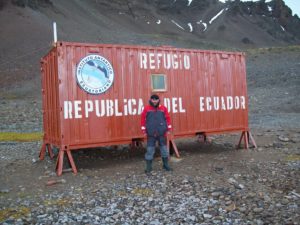 Republica del Ecuador it’s an Antarctic Refuge located at Hennequin Point, 62°07’16” South, 58°23’42” West inside the Admiralty Bay on King George Island (or 25 de Mayo Island). It was installed by the first Antarctic expedition of Ecuador and inaugurated on January 13, 1988 with the assistance of delegations from Germany, Argentina, Brazil, Chile, United States, Poland, Russia and Uruguay, which have Bases, scientific stations and shelters in the island. Its first occupants were Ecuadorian scientists who performed hydrographic and geological works. Republica del Ecuador Refuge consists of a six-meter container that has basic medical supplies, non-perishable food and two bunk beds with a capacity for four people. It is for researchers and tourists who want to rest or study the area.
Republica del Ecuador it’s an Antarctic Refuge located at Hennequin Point, 62°07’16” South, 58°23’42” West inside the Admiralty Bay on King George Island (or 25 de Mayo Island). It was installed by the first Antarctic expedition of Ecuador and inaugurated on January 13, 1988 with the assistance of delegations from Germany, Argentina, Brazil, Chile, United States, Poland, Russia and Uruguay, which have Bases, scientific stations and shelters in the island. Its first occupants were Ecuadorian scientists who performed hydrographic and geological works. Republica del Ecuador Refuge consists of a six-meter container that has basic medical supplies, non-perishable food and two bunk beds with a capacity for four people. It is for researchers and tourists who want to rest or study the area.
Mehdi F5PFP together with ON7ZM (see 2 pics aside), made a short 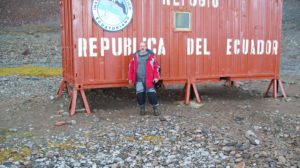 stop on Republica del Ecuador Refuge on Febr.22, 2009 just before landing on Macchu Pichu Base (WAP PER-Ø1).
stop on Republica del Ecuador Refuge on Febr.22, 2009 just before landing on Macchu Pichu Base (WAP PER-Ø1).
He was active from there as HC/FT5YJ (see pics attached) and logged 5 QSOs with South America (LU3XPM, CX8OX, LU8XW, PY2BQA, CE8RPA), even if nobody claimed the card …! Mehdi wrote:-we discovered an high QRM level coming from the generator that provided S7 to S9 of QRN on 20mts. We spent most of the time trying to resolve that problem but … nothing! So, Republica del Ecuador was on air even if it was a very brief!-
Ecuadorian Navy provide regular maintenance: Ecuadorian mission did repair the Refuge on February 9, 2006 working 37 days, and also from December 16, 2013 through January 18, 2014, Officials of the 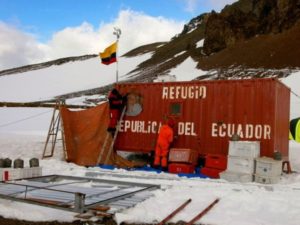 INOCAR (Oceanographic Institute of the Navy), performed the integral maintenance of the Refuge including graffiti, repair of walls, ceiling and floor.(pic on the right)
INOCAR (Oceanographic Institute of the Navy), performed the integral maintenance of the Refuge including graffiti, repair of walls, ceiling and floor.(pic on the right)
See also: http://www.periodicolaprimera.com/2014/01/personal-del-inocar-efectuo.html
Now to “Republica del Ecuador Refuge” already listed on WAP-WADA Directory, at the light of the information provided by Mehdi F5PFP- HC/FT5YJ , whose log says: -22/02/2009 from 14:05 to 14:20utc 20m SSB; LU3XPM, CX8OX, LU8XW, PY2BQA, CE8RPA-, a reference has been given as WAP ECU-Ø2
It was a brief operation due to a problem with the generator –says Mehdi– I also remember the refuge is not well situated to anchor with a sailing boat due to an inappropriate depth of the sea floor , so we stayed just maybe an hour then we moved to Machu Picchu a neighboring place of Admiralty Bay – King George Island-.
TNX F5PFP

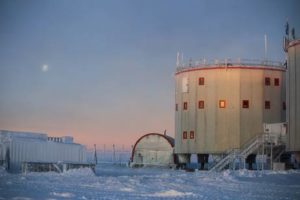 “Sun or not, the view is magical”.
“Sun or not, the view is magical”.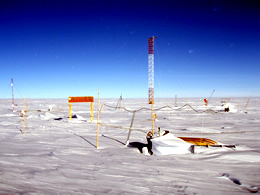 Mizuho Station 70°41’58’’South, 44°16’52’’East was established as a summer Base in July, 1970 on the Mizuho Plateau, 2230 mts above sea level, 270 km south-east of Syowa Station (WAP JPN-Ø3). Mizuho Station (WAP JPN-Ø2) in one of the fourth Japanese scientific installations in Antarctica.
Mizuho Station 70°41’58’’South, 44°16’52’’East was established as a summer Base in July, 1970 on the Mizuho Plateau, 2230 mts above sea level, 270 km south-east of Syowa Station (WAP JPN-Ø3). Mizuho Station (WAP JPN-Ø2) in one of the fourth Japanese scientific installations in Antarctica.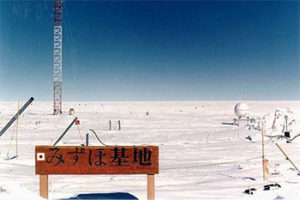 occupied for meteorological and glaciological observations.
occupied for meteorological and glaciological observations.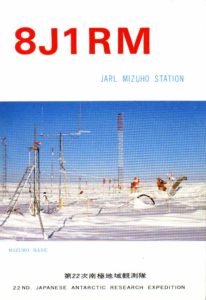
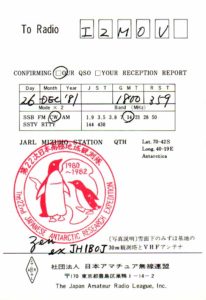
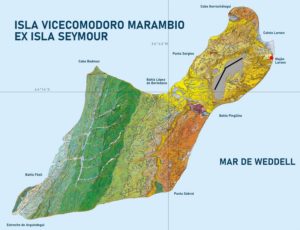 Larsen cairn, 64°14’13” South and 56° 35′ 7″ West, is located 2 kilometers from the facilities of Marambio Base (WAP ARG-21)direction E-N-E (76˚) and 230 meters to the S-E-S of the Chavez lighthouse, 40 meters above sea level and 70 meters from the coast.
Larsen cairn, 64°14’13” South and 56° 35′ 7″ West, is located 2 kilometers from the facilities of Marambio Base (WAP ARG-21)direction E-N-E (76˚) and 230 meters to the S-E-S of the Chavez lighthouse, 40 meters above sea level and 70 meters from the coast.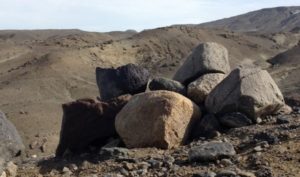
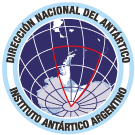 For this reason, the footprints of the first Antarctic pioneers have an extraordinary heritage value for all mankind. The historical sites of the sixth continent are so scarce, that, in all its extension, including the surrounding islands, we find less than one hundred of them, however, a new site has been added to that select list thanks to the work promoted by the Argentine Antarctic Program, promoted by the National Antarctic Directorate (DNA), through the Argentine Antarctic Institute (IAA).
For this reason, the footprints of the first Antarctic pioneers have an extraordinary heritage value for all mankind. The historical sites of the sixth continent are so scarce, that, in all its extension, including the surrounding islands, we find less than one hundred of them, however, a new site has been added to that select list thanks to the work promoted by the Argentine Antarctic Program, promoted by the National Antarctic Directorate (DNA), through the Argentine Antarctic Institute (IAA).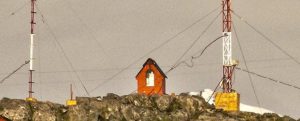 The “Capilla Cristo Caminante”, is located up in the hill behind San Martin Station (WAP ARG-Ø8). The pics aside show the closest shots of the Chapel of which, so far we do not have better visualizing.
The “Capilla Cristo Caminante”, is located up in the hill behind San Martin Station (WAP ARG-Ø8). The pics aside show the closest shots of the Chapel of which, so far we do not have better visualizing.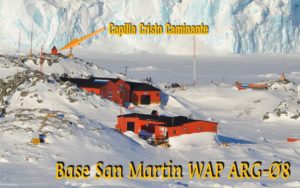

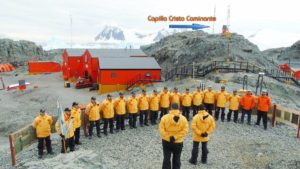
 Mr. Fabricio Tavares from Brazil, is the responsible of a Twitter account which loads so many useful Antarctic information; he wrote: – Congratulations for the important job WAP website accomplishes! Feel free to use any info WAP may wants from my Twitter account-.
Mr. Fabricio Tavares from Brazil, is the responsible of a Twitter account which loads so many useful Antarctic information; he wrote: – Congratulations for the important job WAP website accomplishes! Feel free to use any info WAP may wants from my Twitter account-.

 Amateur Radio Circle of the Army Telecommunications School, set a test in the field, to evaluate response capabilities in case of Emergency. They did install stations Emergency communications and test transmissions in HF, VHF, UHF with its repeaters and Digital voice systems in DMR, managing to communicate with more than a hundred stations.
Amateur Radio Circle of the Army Telecommunications School, set a test in the field, to evaluate response capabilities in case of Emergency. They did install stations Emergency communications and test transmissions in HF, VHF, UHF with its repeaters and Digital voice systems in DMR, managing to communicate with more than a hundred stations.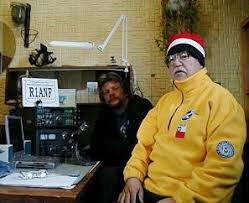 d; nevertheless the emergency practice can be exported in Antarctica as well where the situation is sometimes worse than in the Continent!
d; nevertheless the emergency practice can be exported in Antarctica as well where the situation is sometimes worse than in the Continent!